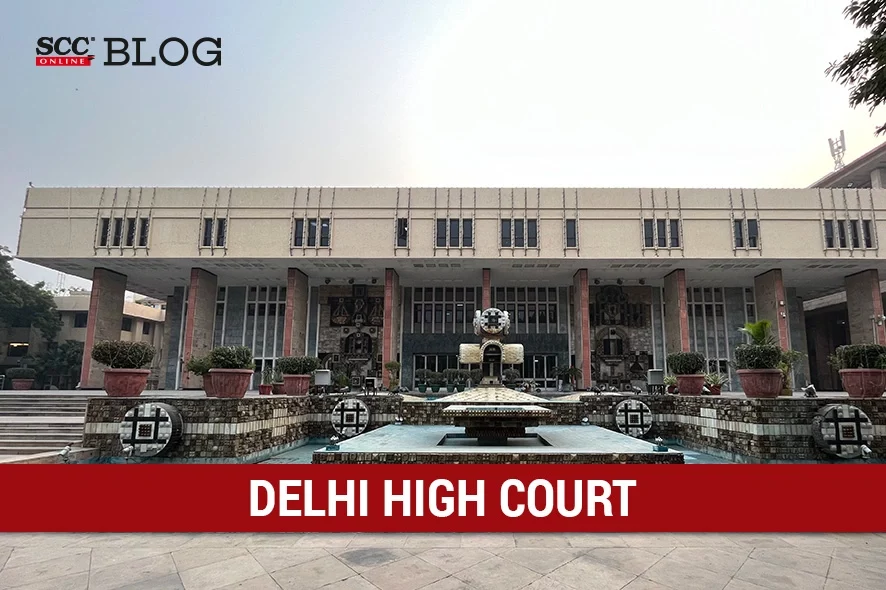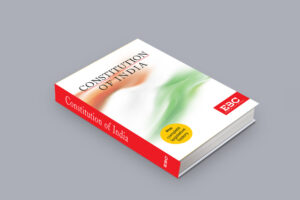Delhi High Court: In a case wherein the petitioners seek to challenge the order dated 02-12-2022 passed by the Chief Metropolitan Magistrate (‘CMM’), South East District, Saket District Court under Section 14 of the Securitisation and Reconstruction of Financial Assets and Enforcement of Security Interest Act, 2002 (‘SARFAESI Act’), Purushaindra Kumar Kaurav, J.*, opined that if measures under Section 13(4) of the SARFAESI Act were taken up by the respondent and at a later stage having withdrawn the said measures, the respondent intended to move to measures under Section 14 of the SARFAESI Act, there was no restraint under the law and such a restraint could not be read under the provisions of Section 13(4) or Section 14 of the SARFAESI Act as the same would amount to rewriting the statute. The Court dismissed the petition and opined that this Court could not transgress into the domain of the legislature to fill the alleged legal void in the scheme of SARFAESI Act, which according to the petitioners, was rendering them remediless under the Act before the possession was taken over by the respondent.
Background
On 10-01-2012, the respondent sanctioned the loan of Rs. 10 crores against the mortgaged property and the said loan account was restructured and supplementary agreement was executed along with fresh payment schedule on 27-01-2014. It appeared that Surjeet Kaur, sister of one of the Directors of Diamond Entertainment Technologies (P) Ltd. (Petitioner 1), filed a suit for partition before this Court and vide order dated 07-06-2021, an order of status-quo was passed directing the parties to maintain status-quo in respect of the title possession of the suit property by the next date of hearing. On account of default in the repayment, the account was classified as a non-performing asset (NPA) on 30-06-2021. On 12-07-2021, the respondent being a secured creditor, demanded the outstanding balance of Rs. 5,72,24,893.47 along with interest and charges accruing to the loan account after 02-07-2021 under Section 13(2) of the SARFAESI Act. On 12-09-2021, a reply was sent by the petitioners raising several objections under Section 13(3A) of the SARFAESI Act. On 22-09-2021, constructive possession of the mortgaged property was taken by the respondent in terms of Section 13(4) of the SARFAESI Act read with Rule 8(1) and (2) of the Security Interest Enforcement Rules, 2002.
On 01-12-2021, an application was filed by the respondent under Section 14 of the SARFAESI Act before the CMM and an order was passed allowing the said application, while appointing the Receiver to take over the possession of the mortgaged property. Further, the respondent filed an application for extension of the term of Receiver appointed by the CMM. The said application was allowed vide order dated 02-12-2022 and the same was under challenge in the present writ petition.
Submissions on behalf of the Petitioners
It was submitted that the impugned order was an abuse of the process of law, at the instance of the respondent which was a Non-Banking Financial Corporation (‘NBFC’) engaged in providing financial assistance to the public at large. The petitioners further submitted that there was already a stay operating with respect to the mortgaged property and that the said stay was continued from time to time and was very much in existence on the date of passing of the order on 02-12-2022. The impugned order was passed on an application for extension of the earlier order dated 06-12-2021, which was in direct contravention of the mandate of Section 14 of the SARFAESI Act. The petitioners also submitted that once the respondent itself had resorted to the remedy under Section 13(4) of the SARFAESI Act, therefore, at a later stage, the respondent could not directly invoke Section 14 of the SARFAESI Act after withdrawing the notice as per Section 13 of the SARFAESI Act, while taking away the accrued right in favour of the petitioners.
Analysis, Law, and Decision
The Court opined that once the notice dated 22-09-2021 was withdrawn, the right, if any, accrued in favour of the petitioners to take up proceedings under Section 17 of the SARFAESI Act, stands extinguished. The petitioners, therefore, could not have any possible objection against the respondent for withdrawing notice dated 22-09-2021 and for proceeding under Section 14 of the SARFAESI Act. The Court observed that the action of the respondent was in conformity with the decision of Standard Chartered Bank v. V. Noble Kumar, (2013) 9 SCC 620 and Hindon Forge (P). Ltd. v. State of U.P., (2019) 2 SCC 198, wherein the Supreme Court held that “it would be up to the secured creditor to decide as to whether the secured creditor would resort to Section 13(4) measure or would straightforwardly adopt measures as per Section 14 of the SARFAESI Act. The borrower or the guarantor did not have any say to suggest any particular mode or manner in which the recourse could be taken by the secured creditor under the provisions of the SARFAESI Act”.
Thus, this Court opined that if measures under Section 13(4) of the SARFAESI Act were taken up by the respondent and at a later stage having withdrawn the said measures, the respondent intended to move to measures under Section 14 of the SARFAESI Act, there was no restraint under the law and such a restraint could not be read under the provisions of Section 13(4) or Section 14 of the SARFAESI Act as the same would amount to rewriting the statute. Moreover, the likeliness of an action under SARFAESI Act would not be a sufficient cause to challenge the initiation of recovery proceedings before the DRT, rather the challenge was sustainable in the eyes of law only when the borrower loses the possession of the secured asset.
The Court rejected the petitioner’s contention that before Section 13(4) measures were taken, the remedy under Section 17 of the SARFAESI Act could not be availed and therefore, at this stage itself, the writ petition should be entertained. The Court relied on Rajpur Hydro Power Ltd. v. PTC India Financial Services Ltd., 2017 SCC OnLine Del 8277 and K.K. Saksena v. International Commission on Irrigation and Drainage, (2015) 4 SCC 670 and opined that in the instant case, the respondent by virtue of being an NBFC, which was not satisfactorily shown by the petitioners to be involved in discharging public functions, would not fall in the classification of ‘instrumentality’ or ‘agency’ of State or ‘any other authority’ discharging public functions. This Court thus, concluded that the doors for exercising writ jurisdiction could not be opened for the petitioners within the narrow scope of judicial review under Article 226 of the Constitution qua the NBFC and their action under the provisions of the SARFAESI Act.
The Court observed that “a pragmatic analysis of the nature of transaction between the parties in the instant case would suggest that the petitioners had established a privity with the respondent vide loan agreement with an intention to reap monetary benefits” and thus, opined that the said transaction did not involve any public element rather it seemed to be a private affair between the two private parties based upon monetary consideration. It was, therefore, inappropriate for the petitioners to seek a public law remedy under Article 226 of the Constitution in pursuance of a private transaction between the two parties which did not have any ramifications for the public at large.
The Court relied on Vanya Jain v. Ambit Finvest (P) Ltd., 2023 SCC OnLine Del 4476 and held that between the order passed by the CMM as per Section 14 of the SARFAESI Act and the measures being taken under Section 13(4) of the SARFAESI Act, the interference was not warranted.
The Court did not find any substance in the petitioners’ submission that along with the application, a fresh affidavit was required to be filed or a fresh application should have been moved. The Court opined that when the order was already passed on 06-12-2021, because of certain proceedings taken up by the petitioners, the same could not be implemented. Thus, no fault could be found in the approach of the respondent in filing the application for extension of the order dated 06-12-2021. The Court further opined that if such a recourse was held to be not maintainable, the purpose of the SARFAESI Act would again be defeated, as on one or the other pretext, the borrower would endeavour to linger on the proceedings to ensure that the possession was not taken within the stipulated time, so that the entire proceedings would have to be taken afresh, consequently delaying the recovery proceedings.
The Court opined that if the petitioners feel that there were irregularities or illegality in taking action against them, the remedy would lie under Section 17 of the SARFAESI Act and under the facts of the present case, the petitioners could not invoke Article 226 of the Constitution to frustrate the object of recovery proceedings. The Court further opined that at this juncture, this Court could not transgress into the domain of the legislature to fill the alleged legal void in the scheme of SARFAESI Act, which according to the petitioners, was rendering them remediless under the Act before the possession was taken over by the respondent. This Court could not create a fresh normative reality by interpreting the way as desired by the petitioners.
Thus, this Court dismissed the instant writ petition and clarified that when the proceedings relating to possession were taken, the petitioners would be at liberty to seek the available statutory remedies in accordance with law.
[Diamond Entertainment Technologies (P) Ltd. v. Religare Finvest Ltd., 2023 SCC OnLine Del 4905, decided on 14-08-2023]
*Judgment authored by: Justice Purushaindra Kumar Kaurav
Advocates who appeared in this case :
For the Petitioners: Praveen Kumar, Nitesh Tiwari, Advocates;
For the Respondent: Sanjeev Singh, Ridhi Pahuja, Taniya Bansal, Advocates.







